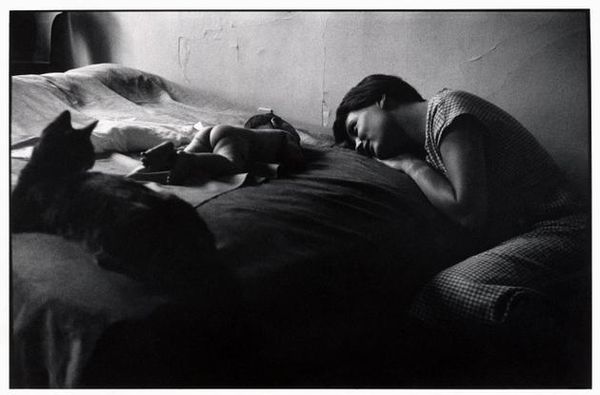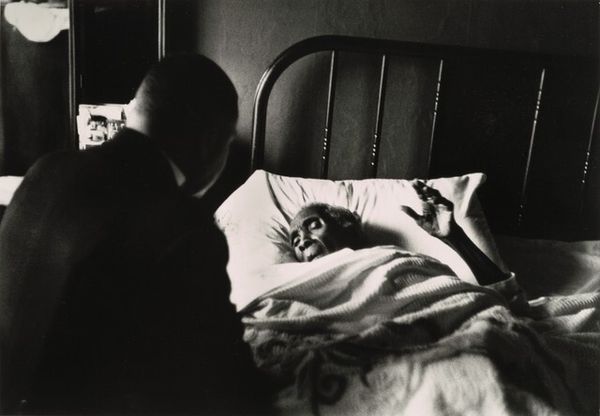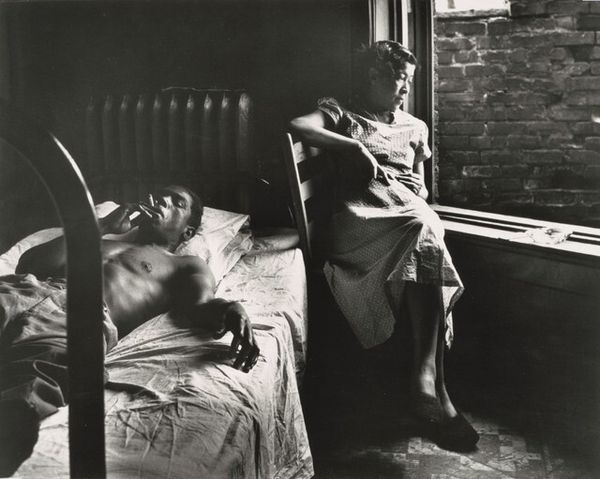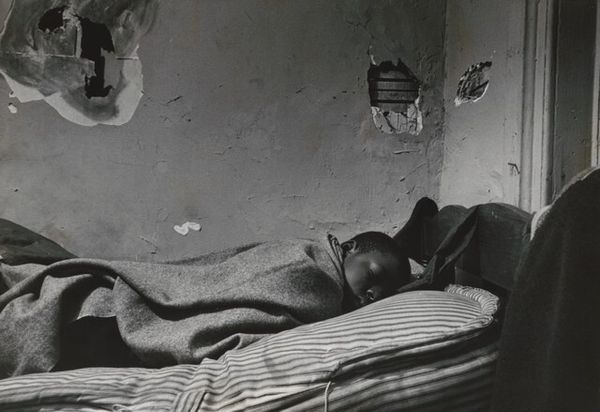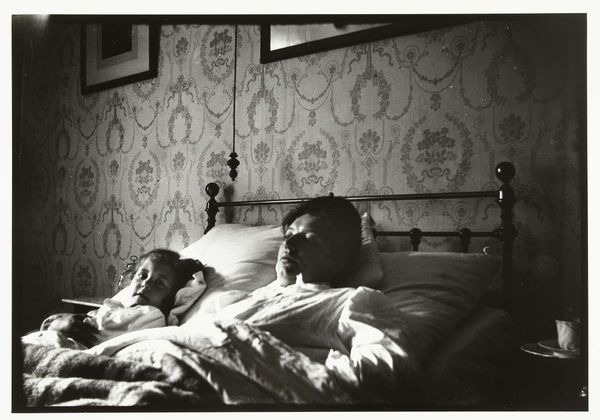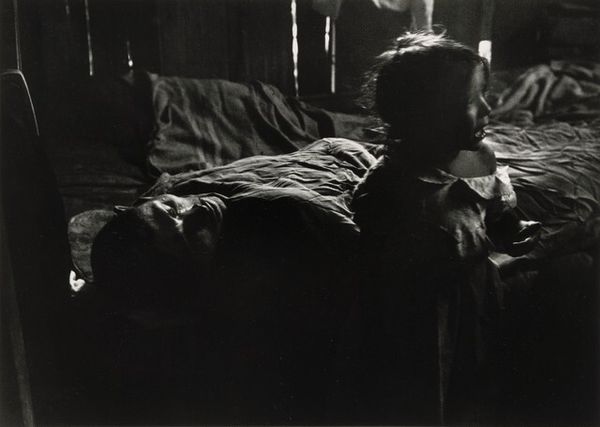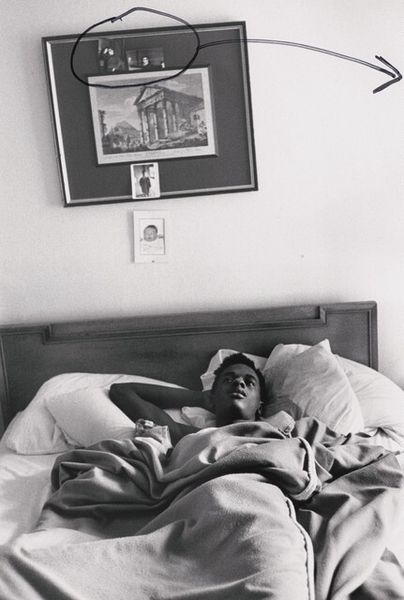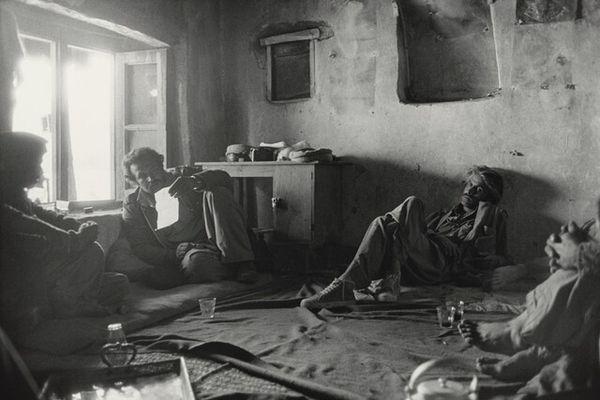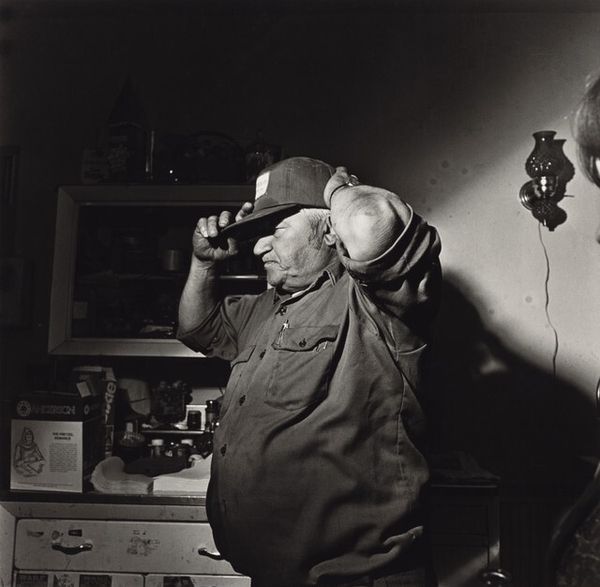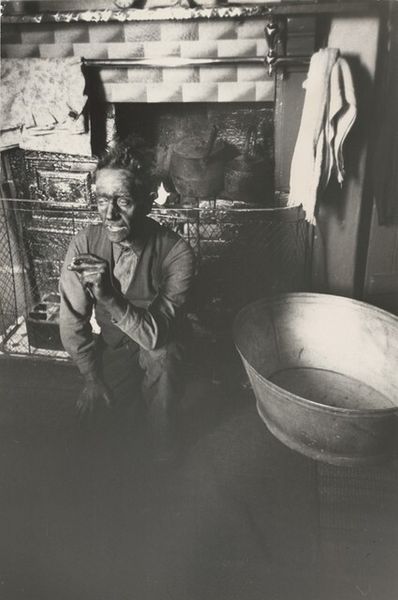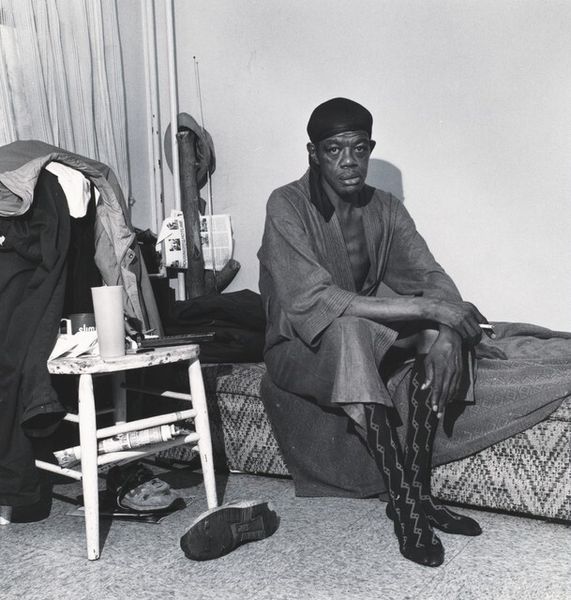
photography, gelatin-silver-print
#
portrait
#
narrative-art
#
social-realism
#
photography
#
gelatin-silver-print
#
monochrome photography
#
genre-painting
#
monochrome
#
modernism
#
monochrome
Dimensions: sheet: 51.1 × 60.8 cm (20 1/8 × 23 15/16 in.) image: 40 × 56 cm (15 3/4 × 22 1/16 in.)
Copyright: National Gallery of Art: CC0 1.0
Curator: Here we have Gordon Parks’ gelatin-silver print, "Norman Jr. Reading in Bed," created sometime after 1967. Editor: My first impression is of stillness, almost a forced quiet. The composition emphasizes horizontal lines—the bed, the boy’s body—while the heavy blanket introduces a strong diagonal. It feels deliberately arranged to communicate a kind of resigned intimacy. Curator: Indeed. The horizontal evokes a sense of rest, but within a confined space. The peeling plaster, the stark monochrome palette, all point to the boy's immediate environment. Note the powerful symbol of literacy itself, suggesting a route to empowerment despite circumstance. Editor: The book is intriguing, a rectangle of light held in his hand. A classic narrative juxtaposition—light and dark, interior and exterior. Is Parks commenting on the social realism inherent in accessing knowledge? Curator: Absolutely. Light can be read here as wisdom itself, and darkness represents, perhaps, ignorance or lack of opportunity. It reminds us that reading is both an escape and a potent tool, historically restricted and therefore incredibly symbolic. Editor: I'm compelled by how Parks directs our gaze. He uses tonal contrast almost theatrically, illuminating Norman’s face while much of the background recedes. It makes him seem isolated, almost as though he’s on a stage. Curator: A powerful statement on social conditions, seen through the very private act of reading. His act is both solitary and a gateway. A form of rebellion against societal expectations of those days. Editor: Looking at the formal elements alone—the geometry, the stark tonality—it's easy to become absorbed in a study of shape and form, yet Parks never lets us forget the human element, the narrative. Curator: Precisely. Parks gives us much to contemplate—a quiet moment of literacy and individual striving set against a backdrop of societal constraints. Editor: And for me, the photograph becomes more than the sum of its parts, it becomes a reminder of how a focused aesthetic can transform our way of understanding lived experience.
Comments
No comments
Be the first to comment and join the conversation on the ultimate creative platform.
